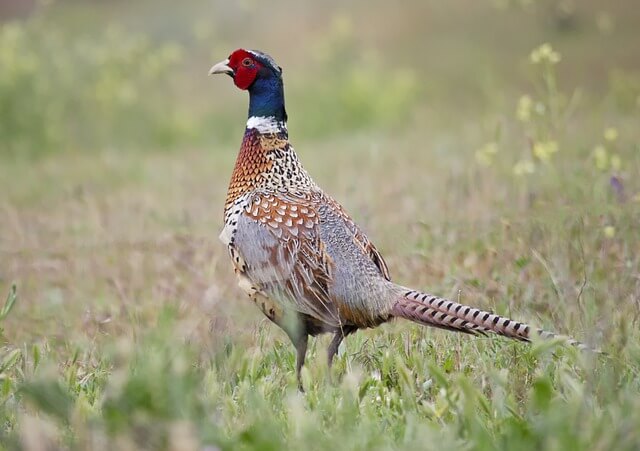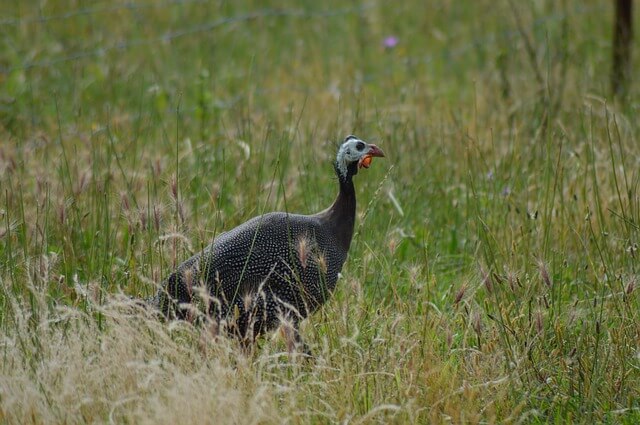Turkeys are undoubtedly one of the most iconic birds in the world, known for their impressive size, striking colors, and unmistakable gobbling call. Beyond their cultural significance during Thanksgiving, turkeys are fascinating creatures that have captivated humans for centuries.
In this article, we will explore eight birds that look like turkeys, highlighting their unique features, behaviors, and habitats. From the Helmeted Guineafowl to the majestic Ring-necked Pheasant, these birds demonstrate the diversity and beauty of nature’s creations.
So, whether you’re a bird enthusiast or simply curious about these fascinating creatures, read on to discover some amazing turkey lookalikes that you may not have known existed.
Table of Contents
Turkey (Overview)

Brief history
Turkeys have a long and fascinating history that dates back to ancient times. Native to North America, these birds were first domesticated by indigenous peoples more than 2,000 years ago. By the time Europeans arrived in the Americas in the 16th century, turkeys were already an important food source and cultural symbol among many Native American tribes.
When the Spanish first encountered turkeys in Mexico, they quickly recognized their value as a food source and began exporting them to Europe. From there, turkeys spread across the continent and eventually made their way to other parts of the world, including Africa and Asia.
Today, turkeys are still an important part of North American culture, and they are widely consumed in the United States and Canada. They also play a significant role in traditional Thanksgiving celebrations, where they are often the centerpiece of the meal.
Physical Characteristics
Turkeys are large birds that can weigh anywhere from 5 to 25 pounds, depending on the species. They have distinctive features such as a fleshy wattle that hangs from their neck, a snood that hangs over their beak, and a fan-shaped tail. Their feathers can range from brown to black, and they often have iridescent feathers on their wings and tail.
Diet and Habitat
Turkeys are omnivores that feed on a variety of foods, including seeds, nuts, insects, and small animals. They prefer to live in forested areas where they can roost in trees at night and forage for food during the day. In North America, they can be found in a wide range of habitats, from deciduous forests to grasslands and deserts.
Behavior and Communication
Turkeys are known to be social creatures and usually reside in groups known as flocks. During the breeding season, males will perform elaborate courtship displays to attract females, which can include puffing up their feathers, spreading their tail, and making gobbling noises. Turkeys also communicate with each other through a variety of vocalizations, including clucks, purrs, and yelps.
Cultural Significance
Turkeys have played an important role in North American culture for centuries, and they continue to be a symbol of abundance and prosperity. In addition to their role in Thanksgiving celebrations, turkeys have also been used in other cultural traditions, such as the Native American dance known as the Turkey Dance. Today, they are also a popular motif in art and design, appearing on everything from coins to clothing.
Birds That Look Like Turkeys
Ruffed Grouse
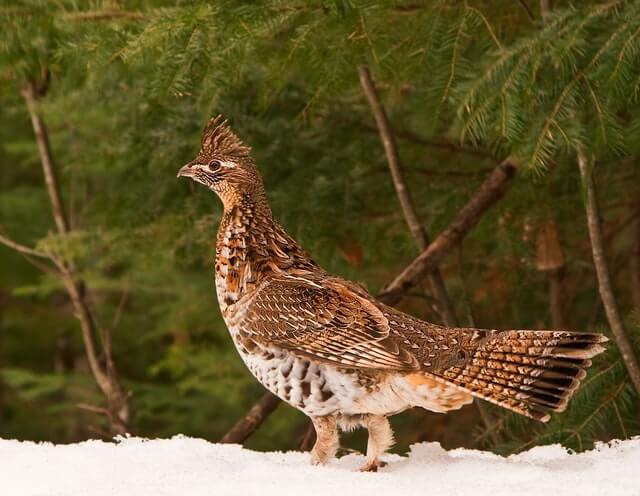
The wild turkey is a bird of the order Galliformes, and the ruffed grouse is a game bird. One can be found in North America while the other can be found on continents across the world. They are both members of their respective orders and as such they have some similarities but also differences.
The most noticeable difference is size, with the turkey being much larger than the ruffed grouse. Ruffed Grouse average 1.5 feet long and 1.2 lbs. whereas the turkey is 2.5-4.0 ft. long and weighs 5 to 24 pounds.
This is mainly due to their habitat, as turkeys live in a forest while ruffed grouse prefer living on open land. The color of these two birds also differs, with the ruffed grouse usually being gray or brown and the turkey being black or white with an iridescent sheen.
Sooty Grouse
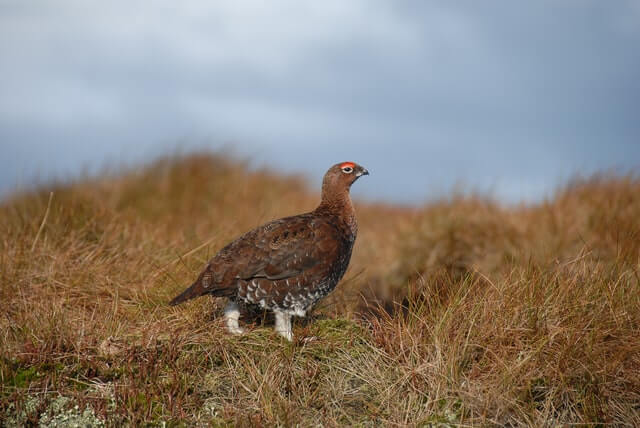
The Sooty Grouse is a small bird that can be found in the boreal forests of North America. They are often mistaken for Wild Turkeys due to their similar size and plumage coloration, but they are quite different in many ways.
One major difference between these two birds is that the Sooty Grouse are distinctly smaller than the Turkey averaging 1.3-1.7 feet long and weighing just 1.6-2.9 lbs whereas the turkey is 2.5-4.0 ft long and weighs 5 to 24 pounds.
Unlike the Turkey, the Sooty Grouse have shorter legs and tail, more pronounced upright stance with deep reddish-brown plumage instead of black or white feathers with an iridescent sheen that is seen on the Wild Turkey.
Ring-necked Pheasant
There are many similarities between the Ring-necked Pheasant and Wild Turkey. They both have iridescent plumage, and they both are found in North America.
However, there are also some major differences between these two birds. The most obvious difference is that the Ring-necked Pheasants are smaller than the Wild Turkey, averaging 1.9-3.0 feet long and weighing just 2.0-2.6 lbs., whereas the turkey is 2.5-4.0 ft long and weighs 5 to 24 pounds (the average weight being 18 pounds).
The Ring-necked Pheasant has an iridescent copper colored plumage with a red face, green neck with a thick white ring around it and the Wild Turkey has a black or white iridescent plumage.
Dusky Grouse
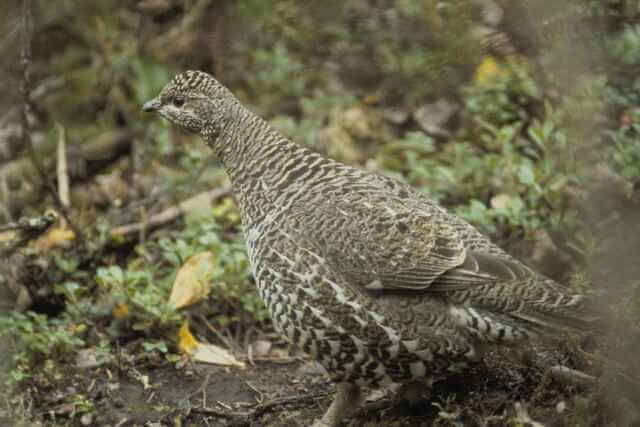
The Dusky Grouse is a bird found in the North American regions of Alaska, Canada, and some areas of the United States. They are known for their secretive behavior but can be seen when they emerge from their dens during winter.
The Dusky Grouse looks very similar to the Wild Turkey but there are some key differences between them. Dusky grouse have more prominent feathers on their head than wild turkeys with no iridescence.
The Dusky Grouse is a lot smaller than the Wild Turkey averaging 1.4-1.9 feet tall and weighing just 2.5-2.8 lbs., whereas the turkey is 2.5-4.0 ft long and weighs 5 to 24 pounds, with plumage of a patterned brownish-gray, white, and black in comparison to the Turkey being black or white with an iridescent sheen.
Guinea Fowl
There are many differences between Guinea Fowl and Turkeys. They may be closely related, but they differ in a number of ways. Guinea fowls have black feathers with iridescent green or purple plumage and long legs while wild turkeys have reddish-brown iridescent feathers.
Guinea fowl are smaller than turkeys and have a shorter legs and tail. Guinea fowl are found in Africa, Europe, Asia, North America and South America while wild turkeys can be found only in North America.
Turkeys are also found in the wild, while Guinea Fowl typically live on farms or in captivity. Turkeys generally roam across much larger areas than Guinea Fowl, as they can fly long distances to find food sources.
Turkeys will often spend their days foraging for seeds and insects while guinea fowl will roost during the day then come out at night to look for any remaining food sources.
Black Grouse
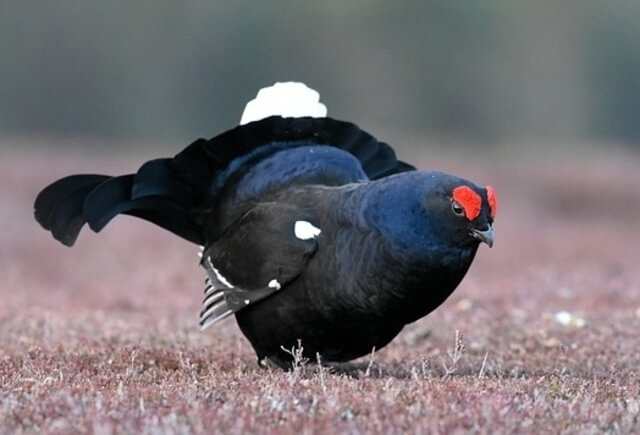
The Black Grouse is a bird that belongs to the grouse family, and it’s native to the Northern Hemisphere. The Wild Turkey is a large ground-dwelling bird native to North America, Mexico, Central America, and South America.
The plumage of the Black Grouse is mostly black with dark blue tones on the neck and back in comparison to the Wild Turkey being iridescent black or white.
The black grouse is smaller than the turkey averaging 1.25-1.65 feet long and weighing just 2.4-2.8 lbs., whereas the turkey is 2.5-4.0 ft long and weighs 5 to 24 pounds, which makes it a much more formidable prey for predators like coyotes or bobcats.
Prairie Chicken
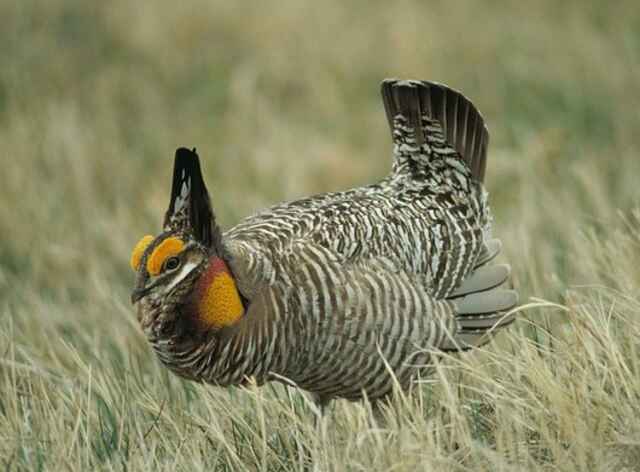
The Greater Prairie Chicken, known for its elaborate courtship displays, is a fascinating bird to observe. Found primarily in grasslands and prairies of North America, these birds feed on seeds, fruits, and insects. With a distinctive booming call and a unique feathered neck patch, they are a true spectacle to witness in their natural habitat.
While the Greater Prairie Chicken may share some physical characteristics with the Turkey, they differ in several ways. Prairie Chickens are smaller and more compact, with shorter legs and a rounder body shape. Their feathers are mottled brown and white, compared to the Turkey’s more uniform dark feathers.
Prairie Chickens also have different mating behaviors, relying on elaborate dancing and displays to attract mates. Overall, these two birds may share some similarities, but they are distinctly different in appearance and behavior.
Helmeted Guineafowl

The Helmeted Guineafowl is a fascinating bird known for its unmistakable appearance, featuring a unique blue and white head, and a black, speckled body. These ground-dwelling birds are typically found in sub-Saharan Africa, where they prefer to reside in dry savannas and scrublands. Their diet consists of a mix of insects, seeds, and small invertebrates.
With their distinct calls and social behavior, the Helmeted Guineafowl is a bird species that never fails to capture the attention of bird enthusiasts and casual observers alike. While the Helmeted Guineafowl and Turkey may share some similarities in their diets, ranging from insects to seeds and fruits, they differ in many other ways.
The Turkey is typically larger, with more vibrant and varied coloration, while the Helmeted Guineafowl has a unique, speckled appearance. Turkeys are found across North and Central America, while Helmeted Guineafowl reside primarily in sub-Saharan Africa. In terms of behavior, turkeys are known for their impressive courtship displays, while Helmeted Guineafowl exhibit a more social and communal lifestyle.
Frequently Asked Questions
How can you tell a male from a female wild turkey?
Wild turkeys are a type of bird that can be found in North America. Male and female turkeys look very similar to one another, but there are some differences between the two sexes.
Male turkeys have a rounder, more bulbous head with no feathers, while females have a pointed, narrower head with feathers. Males also typically weigh about 25% more than females and can be identified by an enlarged snood or wattle at the base of their neck.
Male and female wild turkeys are also easily identifiable by their colors. The male turkey is typically brown, while the female is less showy, and is white with brown stripes. Male turkeys also have a beard, which hangs from their chin down to their chest; females do not have beards.
The males have an average weight of 18 pounds, with a wingspan that is 4.5 feet wide and 3-4 inch long spurs on their legs. The females have an average weight of 11 pounds, with a wingspan that is 5 feet wide and 1-2 inch long spurs on their legs.
What kind of bird looks like a small turkey?
The bird that most closely resembles a small turkey is the Quail. Although they are much smaller, Quails have similar physical characteristics to turkeys, such as plump bodies, round wings, and short beaks.
Quails are often hunted for their meat and eggs, and can be found in various habitats across the world. While there are other birds that share some physical traits with turkeys, Quails are the closest match in terms of overall appearance.
What large black bird looks like a turkey?
The Black Vulture is a large black bird that bears a resemblance to the turkey. They have a feathered black body and a bald, red head.
Black Vultures can be found in a variety of habitats throughout the Americas, and like turkeys, they are scavengers. However, unlike turkeys, they lack the fleshy wattle and snood on their head.
What are the 6 types of turkeys?
There are actually six subspecies of turkeys, all of which are native to North America. They are:
- Eastern Wild Turkey – found in the eastern United States, from Maine to Florida and west to the Mississippi River.
- Osceola Wild Turkey (also known as Florida Wild Turkey) – found only in the peninsula of Florida.
- Rio Grande Wild Turkey – found in the central and western United States, from the Great Plains to the Pacific Coast.
- Merriam’s Wild Turkey – found in the mountainous regions of the western United States, from Arizona to South Dakota.
- Gould’s Wild Turkey – found in northern Mexico and parts of the southwestern United States, particularly in Arizona and New Mexico.
- Ocellated Wild Turkey – found in the Yucatán Peninsula in Mexico, Guatemala, and Belize.
Related Post: 18 Facts About Turkey Vultures That Will Shock You!


